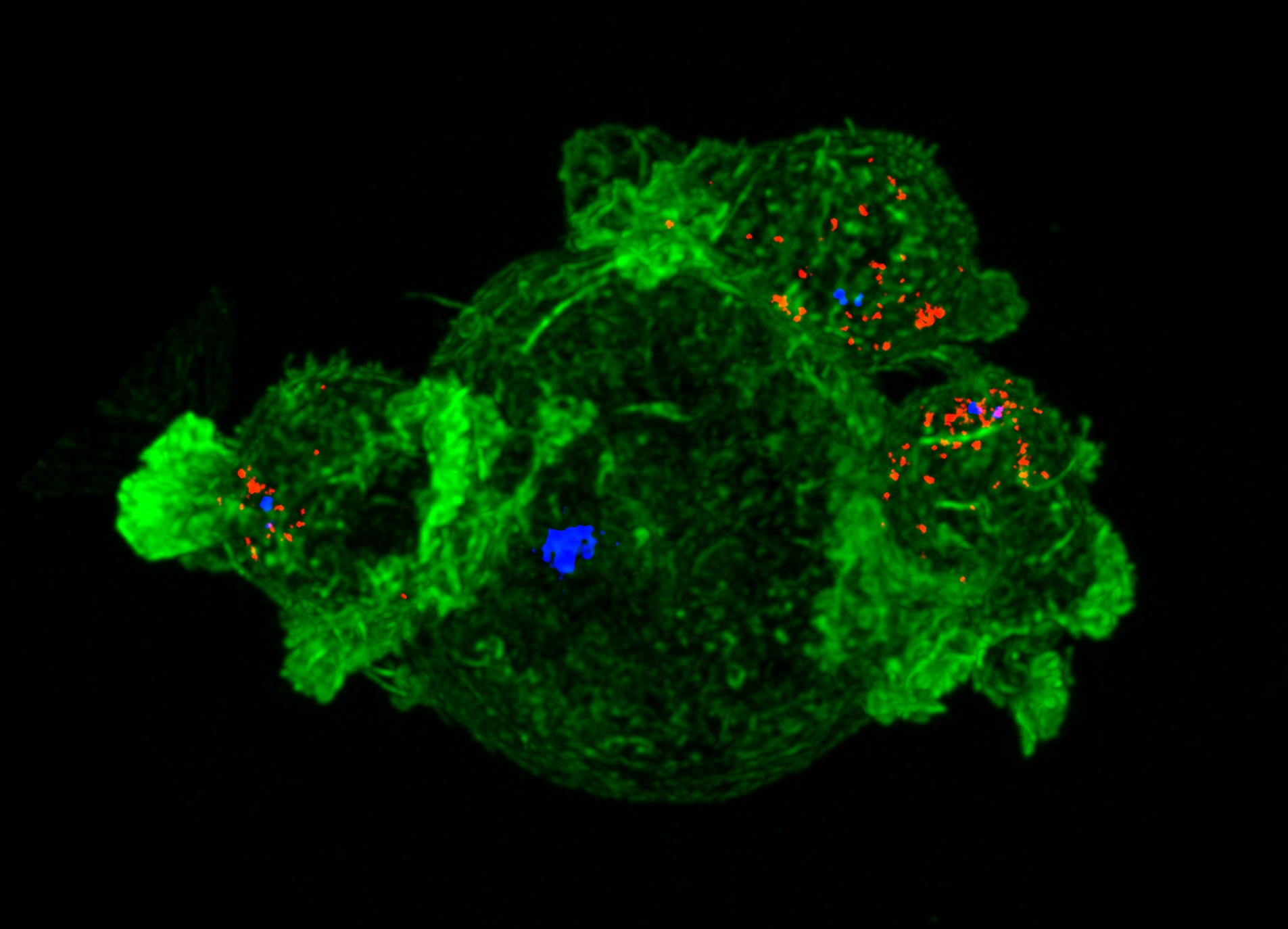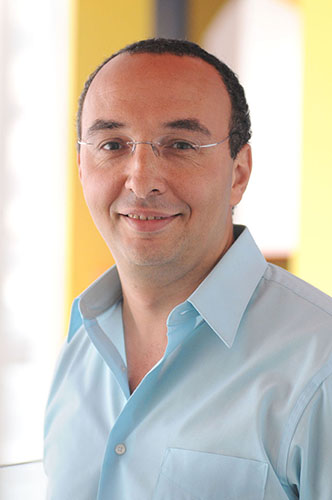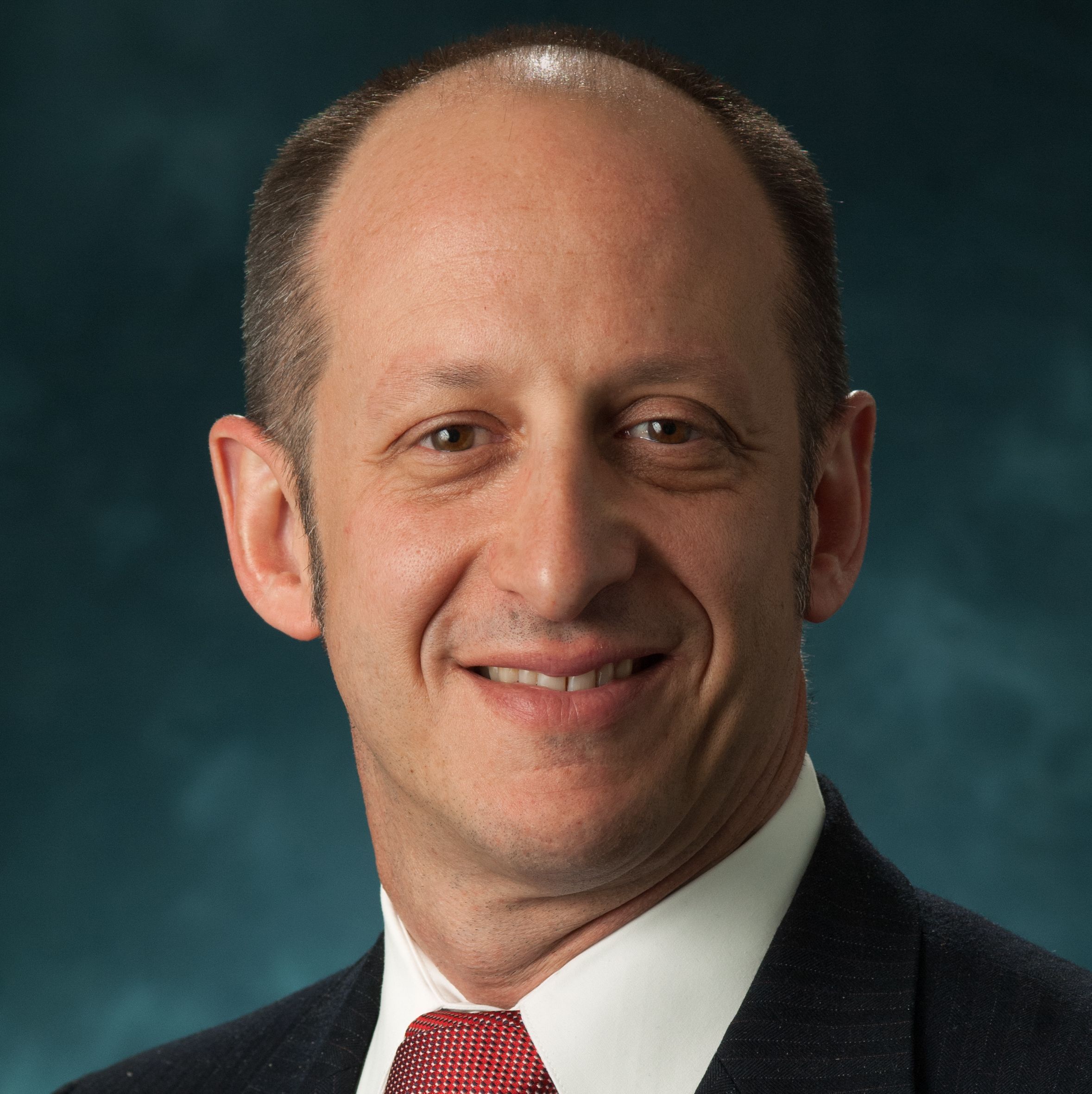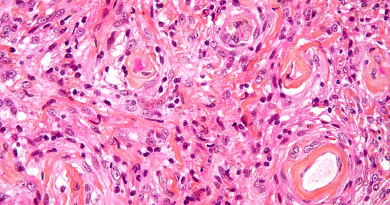Targeting two cell surface molecules can mitigate escape of solid glioblastoma tumors
One strategy to fight cancer cells involves ‘training’ the individual’s own immune system to fight the tumor, what is called immunotherapy. One form of immunotherapy involves ‘teaching’ the immune cells to recognize molecules on the cancer cell surface in ways that would lead to tumor destruction or better tumor control. Which cell surface molecules to target, however, is a difficult decision in part because tumors are a heterogeneous population of cells that differ from each other on their type of surface molecules.

Currently, there is much interest in developing immunotherapies for solid tumors, such as glioblastoma. Solid tumors represent more than 90 percent of all cancers, so effective immunotherapies against one type of solid tumor can potentially help design therapies for other solid tumors, such as breast, lung and colon cancer.
Researchers at Baylor College of Medicine, Texas Children’s Cancer Center and the Center for Cell and Gene Therapy at Baylor, Texas Children’s Hospital and Houston Methodist Hospital have developed a new strategy that involves targeting two specific glioblastoma cell surface molecules. The strategy can eliminate most of the cancer cells in a mouse model of glioblastoma, mitigate tumor escape, control tumors better and improve animal survival.The paper is published in the Journal of Clinical Investigation.

“Tumors are a community of heterogeneous cells that use this heterogenicity to their advantage,” said senior author of the study Dr. Nabil Ahmed, associate professor of pediatrics at Baylor and Texas Children’s Cancer Center.

The researchers began by studying what happens to tumors when a treatment targets a single surface molecule. First-author Dr. Meenakshi Hegde, assistant professor in pediatrics at Baylor, worked with glioblastoma tumor cells in the lab and in a mouse model of glioblastoma. She targeted a single surface molecule on the tumor cells with chimeric antigen receptor T cells, or CAR T cells. CAR T cells are T cells – a type of immune cells involved in defense against tumors – that have been programmed to recognize and kill tumor cells carrying one specific antigen on the surface of cancer cells through an artificial molecule expressed on their surface, the CAR.
When Hegde targeted a single antigen on tumor cells with CAR T cells, the CAR T cells eliminated the cells that had the target on their surface, the one they had been programmed to recognize, leaving behind the cells without the target. When Hegde carried out this experiment in the mouse model, she observed that, although part of the tumor had been eliminated by CAR T cells, in time, the tumor relapsed. The relapsed tumor cells were not carrying the target the CAR T cells recognized, but carried other surface molecules instead.
“We learned that targeting one type of surface molecule on a tumor kills only the cells that carry that antigen. The cells that do not carry the surface molecule are spared and can continue growing. They become the cells that cause relapse,” said Ahmed.
The researchers then used CAR T cells to target two different tumor surface molecules, simultaneously. “If we target more than one surface molecule, we have a better chance of mitigating tumor escape,” said Ahmed.
The antigens the researchers selected, called HER2 and IL13Rα2, are good candidates for tumor therapy because they are expressed on the surface of most glioblastoma cells, but expressed in very low quantities on normal tissues of the body. This is important to minimize CAR T cells targeting and killing normal cells.
Targeting two cell surface molecules was better than targeting one, but the researchers wanted to further improve this strategy. They discovered that when CARs on T cells that bound to HER2 and IL13Rα2 were single bivalent molecules – one molecule that could bind both antigens simultaneously – the anti-tumor “activity was much higher than when separate CAR molecules were used together,” said Ahmed.
The effect of CAR T cells recognizing HER2 and IL13Rα2 simultaneously was more than the addition of the effects of individual recognition of the molecules. “The activity is super additive,” said Ahmed.
Then, Hegde and Ahmed wanted to visualize what was happening between bivalent CAR T cells and glioblastoma cells.

“First, we tried to answer the question with macromolecular imaging, so we teamed up with Dr. Matthew Baker, assistant professor of biochemistry and molecular biology at Baylor and the National Center for Macromolecular Imaging in Houston,” said Ahmed. “With this technology, we simulated fitting the molecules together – HER2 and IL13Rα2 with the bivalent CARs that targeted them simultaneously. We determined that the energy was favorable for this three-way fit, the bivalent CAR molecule and both HER2 and IL13Rα2. The CAR could perhaps bind both target molecules in tandem. We thus called it a Tandem CAR, or TanCAR.”

A natural next step was to try to visualize what actually happened between TanCAR T cells and glioblastoma cells when they interacted with one another. “We went to the Center for Human Immunobiology, at Texas Children’s Hospital, where director Dr. Jordan Orange of Baylor and colleagues have advanced expertise on the imaging of immunological synapses,” said Ahmed. Orange, professor of pediatrics – rhematology, and Dr. Malini Mukherjee, research associate of pediatrics – human immunobiology, used a new technology called Stimulation Emission Depletion (STED) Microscopy, which brings down the resolution to less than 150 nanometers, close to detecting a single molecule. This was the first time such technology was used to visualize CAR immune synapses.

“With STED we were amazed to see that when TanCAR T cells and glioblastoma cells touch each other, they make a concentrated disc of the surface molecules, an immunological synapse. Once CARs bring the glioblastoma surface antigens together, this triggers activation inside the T cells that leads to the death of glioblastoma cells. Simply bringing HER2 and IL13Rα2 together leads the cancer cells to their demise,” said Ahmed.
The researchers anticipate that treating solid tumors with TanCAR T cells can have promising results in clinical trials.
“When we target a single entity in a tumor, the tumor finds a way to continue living without it. But when we target two entities simultaneously with TanCAR T cells, we enable the T cells to kill tumor cells more specifically and effectively. Two is better than one,” said Ahmed.
###
Other authors who contributed to this work include Zakaria Grada, Antonella Pignata, Daniel Landi, Shoba A Navai, Amanda Wakefield, Kristen Fousek, Kevin Bielamowicz, Kevin Chow, Vita S Brawley, Tiara T Byrd, Simone Krebs, Stephen Gottschalk, Winfried S. Wels, Matthew L Baker, Gianpietro Dotti, Maksim Mamonkin and Malcolm K Brenner from Baylor College of Medicine, The Center for Cell and Gene Therapy, Texas Children’s Cancer Center, The Center for Human Immunobiology, The Center for Macromolecular Imaging and Texas Children’s Hospital.
This work was funded by Stand Up To Cancer – St. Baldrick’s Pediatric Dream Team Translational Research Grant (SU2C-AACR-DT1113). Stand Up To Cancer is a program of the Entertainment Industry Foundation administered by the American Association for Cancer Research. This work was also funded by Alex’s Lemonade Stand Pediatric Cancer Foundation (ALSF) and the Alliance for Cancer Gene Therapy (ACGT, Inc.), the National Institutes of Health grants T32HL092332, R01AI067946 and by T32GM088129 from the National Institute of General Medical Sciences.
Conflict of interest: MH, SG, ZG, VSB, TTB, MM, JSO and NA have patent applications in the field of T-cell and gene-modified T-cell therapy for cancer.



